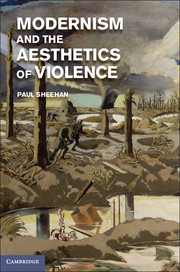
- Cited by 9
-
Cited byCrossref Citations
This Book has been cited by the following publications. This list is generated based on data provided by Crossref.
2017. Konfigurationen krisenhafter Wahrnehmung in der Literatur um 1900. p. 357.
Raczkowski, Chris 2017. A History of American Crime Fiction. p. 153.
Van Alstein, Maarten 2018. Front 14-18. The Experience of Battle in WWI and the Fascist Culture of Violence in Post‑War Germany. Témoigner. Entre histoire et mémoire, p. 57.
Creasy, Matthew 2019. ‘A sort of breviary’: Arthur Symons, J. K. Huysmans and British Decadence. Cahiers victoriens et édouardiens,
Levay, Matthew 2019. Violent Minds.
2019. Violent Minds. p. 215.
Ciocan, Cristian 2021. Violence and image. Continental Philosophy Review, Vol. 54, Issue. 3, p. 331.
Si, Zengyu 2023. Proceedings of the 2nd International Conference on Culture, Design and Social Development (CDSD 2022). p. 550.
Bosman, Frank G. 2023. Fictional Practices of Spirituality I. Vol. 262, Issue. , p. 239.
- Publisher:
- Cambridge University Press
- Online publication date:
- June 2013
- Print publication year:
- 2013
- Online ISBN:
- 9781139568296
- Subjects:
- Literature, English Literature 1900-1945




